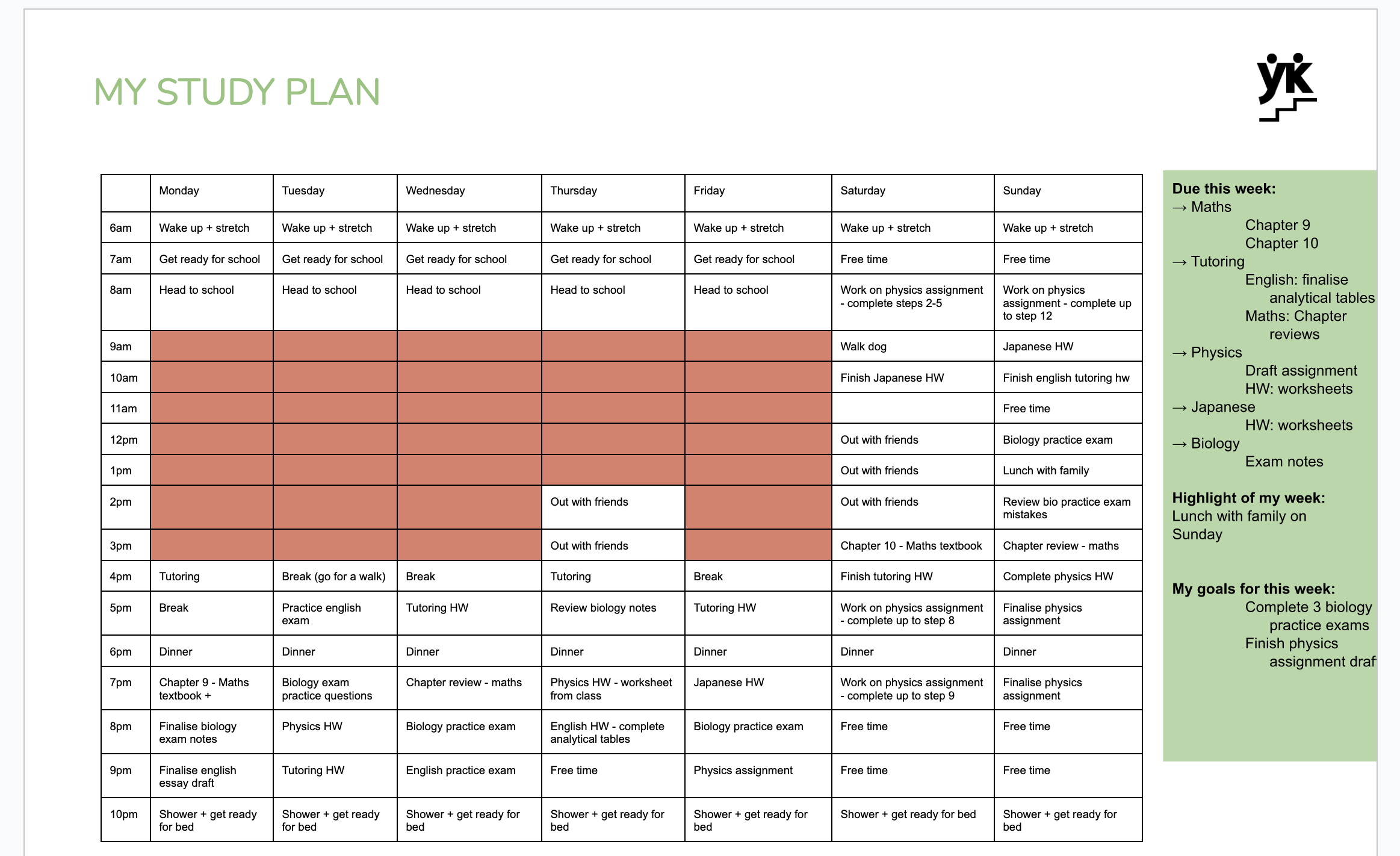
- 4 min read
A parent's guide to ATAR, HSC & Scaling in NSW

Written by the YK Writing Team
A group of tutors & HSC Band 6 All Rounders led by Yuna.
Introduction
In this article, we will go through what ATAR, the HSC and Scaling is so you can fully understand what is going on in your child’s final year of high school.
Universities utilise the Australian Tertiary Admission Rank (ATAR) score to choose students who can enrol in their programmes. A common misconception is that a student’s ATAR is simply their score. However, the ATAR is in fact a student’s rank based on percentiles against all other students who sat the Higher School Certificate (HSC) with them.
The last exam that students in New South Wales take to wrap off their high school career, the HSC, is used to determine their ATAR. Scaling is a technique used to modify students’ raw scores so that they are similar across topics. Students’ performance in one topic is compared to their performance in other subjects, and the grades are adjusted accordingly. Scaling is required because some courses are thought to be more difficult than others, and it ensures that students who perform well in demanding areas are adequately rewarded.
Parents and children must understand ATAR, HSC, and scaling because these factors can affect a student’s ability to enrol in the university degree they want to take. We will examine these three concepts in further detail and explain how they function in the Australian educational system in this post.
What is the difference between ATAR and HSC Mark?
While ATAR and your HSC Mark are both attained in your final year of high school in Australia, they each represent different things.
What is the ATAR?
The ATAR provides information about a student’s overall performance in relation to other students, and compares students who have completed different course combinations within the same state of that particular year.
The ATAR is a number between zero and 99.95 that represents the rank a particular student achieves, calculated by the Universities Admission Centre (UAC). The maximum ATAR that a student can achieve is 99.95, representing the top 0.05 percentile of students. Typically, the number of students that achieve an ATAR of 99.95 is around 50, but it varies from year to year based on the size of the cohort.
The ATAR is a system of ranking that allows universities to determine which students are eligible for admission to certain undergraduate university courses. Universities use the ATAR as a means of selecting students who have achieved a particular academic achievement for their secondary education.
For further information about what the ATAR is, click here.
For a full outline of the particular ATAR a student requires for a certain undergraduate university course, check out the relevant institution’s page! You can also check out the general guide for this on the University Admission Criteria page, found here.
What is the HSC Mark?
The HSC mark is a mark that a student receives for their academic performance in Year 12, in New South Wales. It is a number out of 50 for each subject, with an additional 10 marks available for each subject through “assessment marks” (i.e., school-based assessment tasks, such as assignments and presentations). Each task in Year 12 contributes to a percentage of the final school assessment mark for the subject, with the internal assessment mark, based on their performance in various school assessments and exams throughout the year, comprising 50%. These marks are moderated by the NSW Board of Studies.
What are bands and what do they mean?
Bands refer to the broad range of marks that students can receive for their academic performance in a particular HSC subject. There are a total of six bands for every subject, with each band representing a range of marks.
The bands are more so an indication of a student’s level of achievement in a particular subject and offer context behind their numerical mark. For 2 unit subjects, there are six bands labeled from Band 1 to Band 6, with Band 6 representing the highest level of achievement. For extension level subjects, the bands are labelled from E1 to E4, with E4 being the highest level of achievement.
The bands are based on various factors, including the difficulty of the subject, the number of students taking the subject, and the distribution of marks among those students. The band descriptors outline what students are expected to demonstrate at each band level, and they vary depending on the subject.
For example, in Advanced or Standard Maths, Band 6 requires students to have an extensive knowledge and understanding of the subject matter, a high level of skill in applying that knowledge, and the ability to analyse and evaluate complex problems. In Advanced or Standard English, Band 6 requires students to have a sophisticated understanding of language, a comprehensive knowledge of texts, and the ability to use language effectively to communicate complex ideas.
How is ATAR calculated?
So how does the UAC actually calculate a student’s ATAR? Well, the steps of calculating the ATAR are as follows:
- Raw HSC marks:
The first step in calculating the ATAR is to convert a student’s raw HSC marks (out of 50 for each subject) into scaled marks. The scaling process adjusts the raw marks to take into account the difficulty of each subject and the distribution of marks among the cohort. The scaled marks are then added up across a student’s best 10 units of study, with a maximum of two units from any one subject.
2. Aggregate score:
The scaled marks are then combined to create an aggregate score out of 500. This score represents the student’s overall performance in their best 10 units of study.
Note that 2 unit English is compulsory so this will be accounted for no matter what!
3. Ranking:
Once the aggregate score is calculated, each student is ranked in order of their performance relative to all other students who sat the HSC in that year. The rank that a student attains is based on the aggregated score that all other students who completed the HSC achieves.
4. ATAR calculation:
Now, a student’s rank is converted into an ATAR (as mentioned before, the ATAR is a percentile rank between 0 and 99.95, and it represents the percentage of students who scored below that student in the HSC).
For a further breakdown of how your ATAR is calculated, click here.
Terminology
When students enter year 12, there are some buzz words that are said here and there. So, we have compiled a list of buzzwords that you may need further clarification on.
School scaling: School scaling is a method UAC uses to adjust a student’s raw HSC marks in a particular subject. It takes into account the strength of a student’s cohort to other schools where the student completed the HSC.
To understand how UAC actually performs the scaling of subjects, click here.
[School] Assessment Mark: These are marks or grades that a student receives for their assessments throughout Year 12. The School Assessment Marks are an important factor in determining a student’s final HSC mark because they make up a significant portion of the overall HSC mark in most subjects. The School Assessment Mark will account for 50% of a student’s HSC mark, with the reminder coming from the HSC Examination.
Examination Mark: Examination marks are the marks that a student receives in their final HSC exams for each of their subjects in Australia. The marks that a student receives in their HSC exam are raw marks. These raw marks are then scaled by UAC to account for the difficulty of the exam from year to year, the marks are comparable across subjects and across different cohorts of students. The HSC exam mark will account for 50% of the overall HSC mark, with the remainder coming from the School Assessment Marks.
New South Wales Education Standards Authority (NESA): NESA sets the curriculum for all the schools in the state for the HSC. NESA is also responsible for the administration of the HSC exams, and the quality assurance of school education.
Universities Admission Centre (UAC): Responsible for managing the application and admission process to universities in NSW. UAC is also responsible for calculating and releasing the Australian Tertiary Admission Rank (ATAR) for students who complete the HSC.
Conclusion
In this article, we have covered the intricacies of the ATAR, the HSC, and scaling of HSC subjects.
The ATAR score is used by universities to rank and select students for admission to their courses.
The HSC is the final year of secondary education in New South Wales and is assessed through a combination of school assessments and final exams.
Scaling is a process used to adjust raw HSC exam marks to ensure that the marks are comparable across different subjects and different cohorts of students.
Hopefully, you now have a better understanding of how these three factors are crucial in determining your education or your child’s education beyond high school. By doing well in the HSC, and understanding the scaling process, your child can increase their chances of gaining entry to the university course of their choice!

